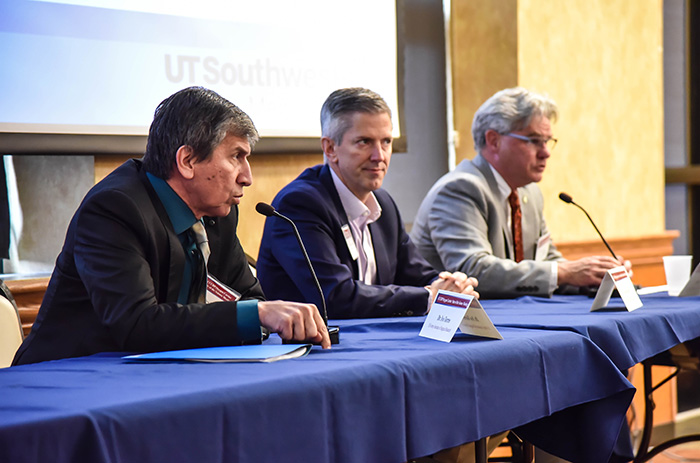Future Blood: Tools and Technology for the Battlefield and Beyond

Kicking off a meeting to cover key developments in the field of blood technology and research on Feb. 6 at Fort Detrick, Maryland, Col. Todd Rasmussen was blunt in laying out his expectations.
"This will be an important part of how we drive innovation for the future," said Rasmussen, director of the U.S. Army Medical Research and Materiel Command Combat Casualty Care Research Program, to the crowd of more than 70 people at the Community Activities Center.
The CCCRP's Oxygen Carrier State of the Science Meeting, a three-day long affair featuring notable speakers from the public, private and academic sectors, was designed to do just that, carving out more than one dozen individual sessions specifically focusing on the topics of blood, potential blood substitutes and various associated clinical trials.
"We see a meeting like this as a bridge to the next generation of blood products," said Dr. Keith Hoots, a key meeting panel member and the director of the Division of Blood Diseases and Resources at the National Heart, Lung, and Blood Institute.
Blood as both a resource and an on-demand product remains integral in maintaining the resiliency of both the Warfighter and the U.S. public as a whole. Given that the USAMRMC research shows that hemorrhage is both the leading cause of potentially preventable deaths on the battlefield and also the second leading cause of death in civilian trauma, the search for products and technologies designed to aid, augment, supplement and –in some cases– even replace blood as an oxygen carrier remains a key goal of contemporary military medical research.
"Around 2012, the Department of Defense transitioned into a phase where we slowed down and simply let the [blood] technology develop," said Dr. Anthony Pusateri, director of research at the U.S. Army Institute of Surgical Research in San Antonio, Texas. "Now we're ready to re-assess the state of the science to see what's worth investing in. After all that time, I'm excited to see what's available."
Additional topics of discussion during the meeting included the perceived proper place for oxygen carriers in far-forward and prolonged field care settings, as well as the broader issue of conquering the twin obstacles of time and distance when delivering blood to the aforementioned locations. Further, the difficulty of obtaining clinical data in such dynamic situations and locations was also a hot topic.
"We've been looking at wearable technology and how that technology can be coupled with the need to collect such data," said Rear Adm. Carmen Maher, acting assistant commissioner for counterterrorism policy, during a panel discussion on the issue.
Additional input from private sector leaders during the multi-day meeting provided USAMRMC attendees with evidence that progress continues to be made in the research field, which lends a renewed confidence to the overall effort moving forward.
"To see some of the therapeutic and knowledge solutions in this field so far, it's been extremely exciting," said Rasmussen in closing.














